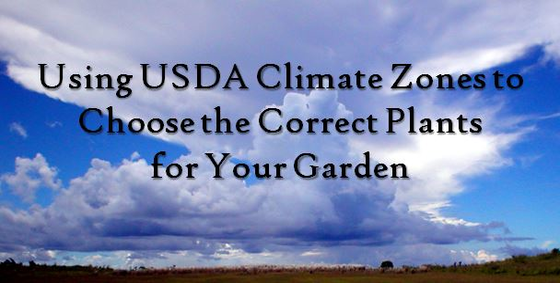
When choosing plant material for your yard or garden, it is important to choose plants that will thrive in your local climate. For example, you wouldn’t want a plant that will die during the cold winter temperatures or a shrub that needs plenty of moisture if you live in a hot, dry area. This is where USDA Climate Zones come in, the zone information can help you choose the right plant for the right location.
What are USDA Climate zones? The United States Department of Agriculture divides North America into 11 zones. The zones are based on the highest and lowest temperatures in a geographic area. The coldest zone is Zone 1, the warmest zone is Zone 11. Many plants will thrive in multiple zones because they are adapted to grow in a range of temperatures or conditions.
How do I find information about the climate zone for my area? The United States Department of Agriculture publishes an online map for all North American states here http://planthardiness.ars.usda.gov/PHZMWeb/ At the same site, you can also find more detailed information about specific states. Just select the name of your state from the list and find your county or nearest city – then refer to the key to see which zone you are in. Make a note of your zone, then when choosing plant material, make sure the plants are appropriate for your zone.
How do I know if a plant is suitable for my zone? At garden centers or stores, take a look at the label on the plant, shrub or tree. The label should say include the zone number(s). Your local garden centers or stores will most likely stock plant material for your zone, if in doubt ask them. If you are buying online, the description of the plant material should include the zone number(s). Zones can be used in reference to any type of plant, vine, shrub or tree.
Is there anything else I should consider, apart from climate zones? Yes, there are other factors that will determine whether the plant material is suitable. For example, soil type, soil moisture, wind exposure, salt (from de-icing or seashore), rainfall, humidity, day length, amount of shade, and elevation (above sea level) will all play a part.
Within your yard or garden, ‘microclimates’ can exist and they can impact your plants(s). So what is a microclimate? A microclimate is a small area where the climate is different from the surrounding area. For example, if an area is shaded by a tree, the microclimate may be dry-shade. If an area is next to a pond or creek, the microclimate may be damp or wetland. If an area is behind a row of shrubs that act as a wind-block, the microclimate may be warmer in winter and cooler in the summer. Observe your yard or garden throughout the seasons and you will become aware of microclimates where plants thrive or don’t grow so well. In addition to the climate zone, you can include any microclimates when choosing plant material.
With a little knowledge, it’s fairly easy to select plants, shrubs or trees that will grow well in your yard or garden. Start with your climate zone and take into consideration any micro climates. Another tip is to take a walk around your neighborhood and see what grows well locally – chances are that plant will do well in your yard too.






Leave a Reply